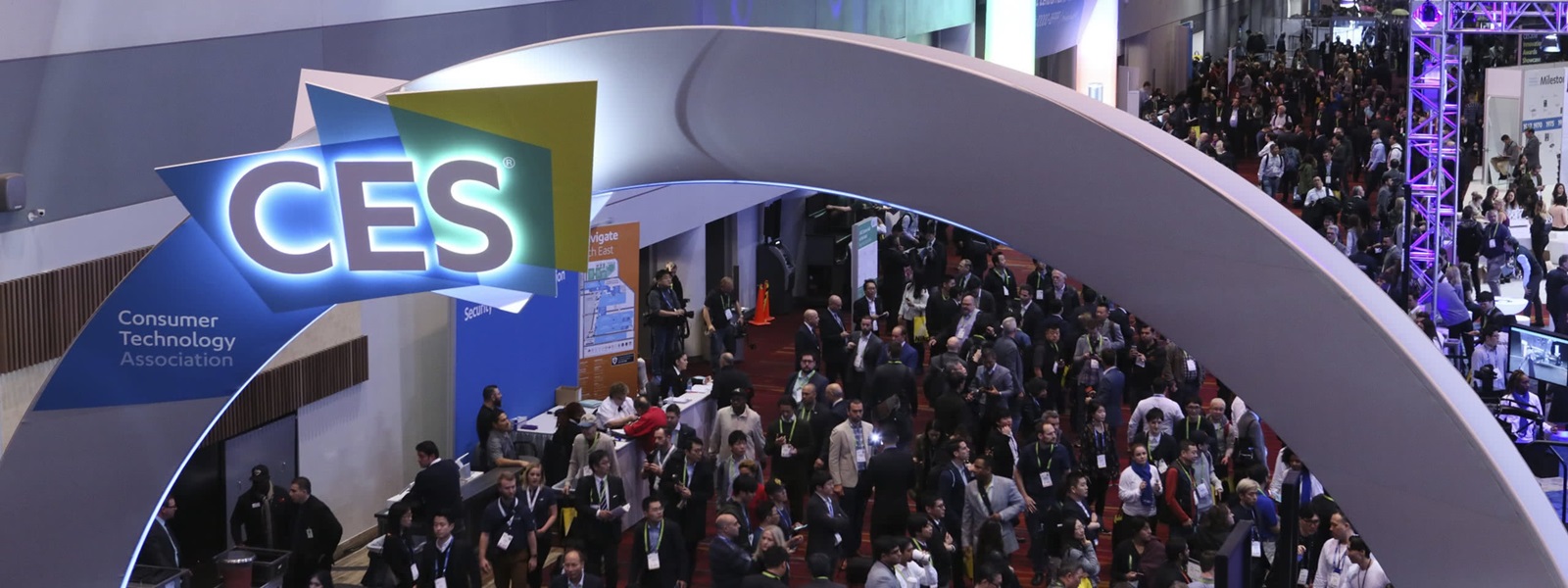
Consumer Electronics Show 2019 Take Away
The tech circus that’s CES is over for another year. The Vegas dust has settled and heart rates have returned to normal after the excitement of a plank of wood that tells you the weather, a rollable TV and an automatic clothes folder. So, let’s take a step back and look at the underlying trends behind all the shiny new trinkets.

#1 – It’s all about you
Personalisation is now an expected feature of every product, no more so than in the beauty and fashion industry that has experienced a wave of disruptors throughout 2018. There was certainly plenty of impressive tech on show. From changing your hair colour in real-time (using some clever face tracking and machine learning) to a smart mirror for high-end hair salons with built-in facial recognition so you can review your recorded past looks with your stylist. Smart mirrors where everywhere. LG showed a concept in-store model which scanned your body and then suggested clothes, while Capstone’s offering was for you home with Google assistant built in. Though quite how people will feel about tech invading that most private moment of introspection first thing in the morning is yet to be seen. However, the ultimate personalisation must be the personal makeup printer that scans you skin and then prints the exact combination of makeup to cover your exact blemishes!

#2 The future is fast, very fast
The imminent rollout of 5G networks was predictably (over?) hyped as the key to unlock incredible experiences for consumers. 5G promises mobile speeds up to 1,000 times faster than 4G, so you could download and ultra-HD video to your phone in under 10 seconds! This combined with all the extra time people are going to have when their car drives itself has got entertainment companies sniffing out an opportunity. Car passengers will be able to download or stream experiences as they get driven. Audi partnered with Disney showcasing an in car VR experience that syncs the virtual movements with the motion of the car to reduce motions sickness, or so they claim. So, a hard-right turn in the car, for example, will coincide with a hard turn in the virtual spaceship. As someone that gets motion sickness on a swing, just the thought of putting on a VR headset and then going for a drive makes me feel uneasy. I hope Audi have designed in a place for the “motion discomfort” bag. Intel partnered with Warner Bros to go a step further and turn your entire car into an entertainment platform all powered by 5G, where you can swap the boring old Real world for a comic strip when you look out the window.

#3 Living on the edge
Despite the promise of 5G the reality is that you cannot always rely on network connectivity, no matter how fast its is. For example, if an automated car needs to decide whether to brake or not it has to decide that all by itself, there is simply not enough time to ask some distant server. The car is, in essence, a mobile data centre. This trend of computing happening at “the edge” rather than centrally in the cloud is only set to continue as more and more ‘things’ get processing power. Gartner have called this phenomenon the “intelligent digital mesh” based on products being intelligent (AI in everything), Digital (blending the digital and physical worlds to create an immersive experiences) and Mesh (exploiting connections between expanding sets of people, businesses, devices, content and services). Nowhere was this phenomenon more obvious than at CES from home and retail to gaming and automotive. The future is billions of things making decisions and talking directly to each other while we lie back in our flying cars and enjoy the ride.